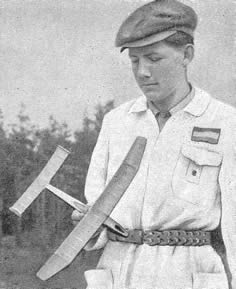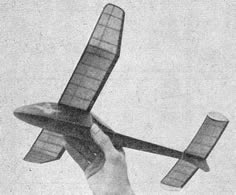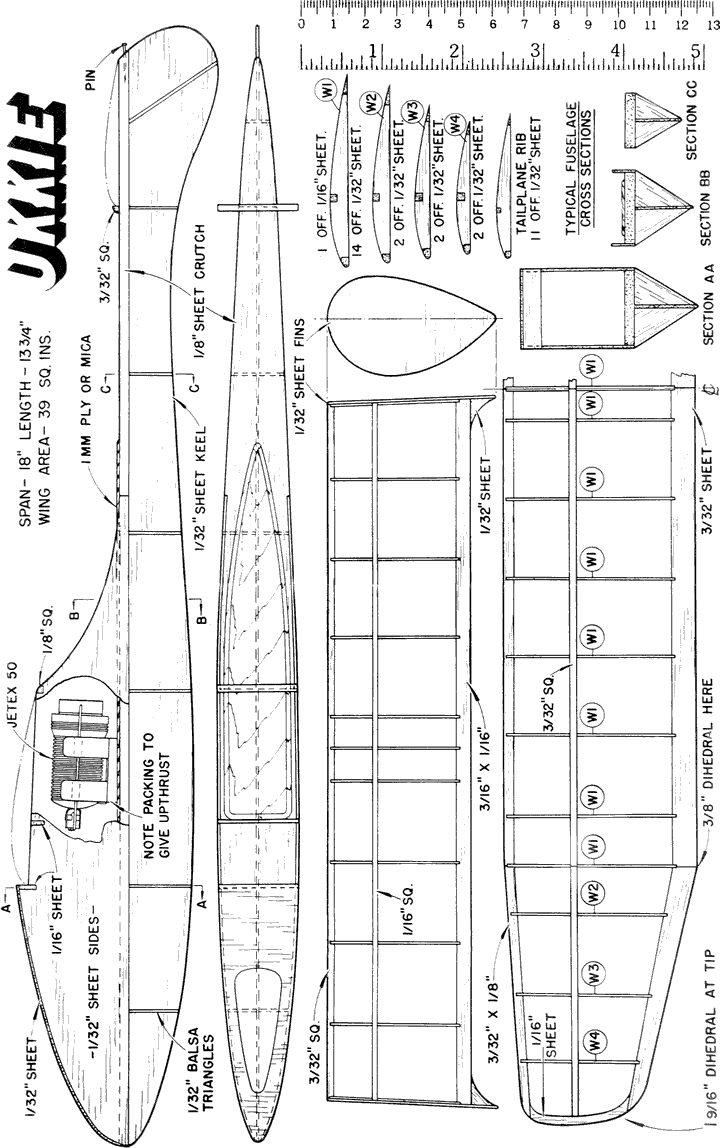|
|
|
|||
|
|
||||
|
|
||||
| Plan: Ukkie | ||||
|
|
HOME | SITE MAP | FORUM | CONTACT |
|
||
|
ABOUT | MOTORS | MODELS | ARCHIVE | HISTORY | STORE | FAQ | LINKS
|
|
|
|
||||||||||||||
|
Ukkie
by well-known Dutch Wakefield flier C. R. de Vries Reprinted from Aeromodeller, June 1953, p. 347
Aptly named (it means “infant” or “little one”)
is this midget Jetex 50 model At the 1952 Swedish Wakefield Trials the Editor’s eye was taken by the nifty flying of a little Jetex 50 model, belonging to top Dutch team member, C. R. de Vries. Negotiations were entered into for the design and in due course a detailed drawing arrived at our offices. This drawing we have “translated” into English by substituting the usual British sizes for the metric ones of the original, and the full-size result will be found [below]. Construction of the fuselage centres around a soft The wing may be constructed flat on the plan, omitting the mainspar until after the dihedral had been inserted, by cracking and cementing the leading and trailing edges. The tailplane is built flat on the plan — note the toe-in of the tip ribs. Fins are cut from Cover the whole model with the lightest (Swedish “hard”) tissue available, after a careful going over with fine glasspaper. Steam-shrink gently and apply thinners [sic – dope, surely?] to which has been added a drop or two of castor oil. Pin down on waxed paper and allow a full 24 hours to thoroughly dry. Cement fins to tailplane and add fillets, and cement an inch-long piece of Using the empty motor, balance the model at approximately mid-chord and try a hand-glide. Movement of the motor or small bits of plasticine may be be used to achieve a perfect glide. Test under power with half-charges until the thrust line is just right, then always put the motor in the same way up. |
 
- Aeromodeller, June 1953 (p. 347)
|
||||||||||||||
|
|
|
||||||||||||||
Plan for Ukkie
(A larger copy of the plan is also available to
view or download). |
|||||||||||||||
|
|
|
||||||||||||||
|
|
|
|
|
|
|
|
Acknowledgements - Cleaned-up plan drawing and OCR of text: David Sheehy - Original article (inc. photos and plan): Bill Henderson |
|
|
|
|
ABOUT | MOTORS | MODELS | ARCHIVE | HISTORY | STORE | FAQ | LINKS |
|
|
Terms of Use
|
Queries? Corrections? Additions?
Please
contact us.
|
|